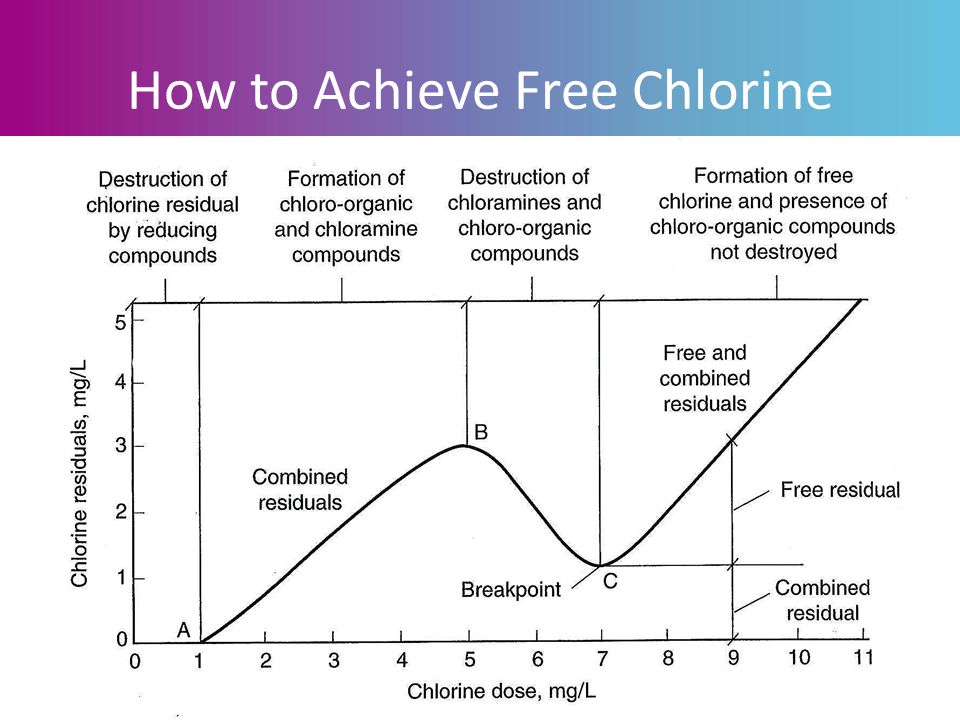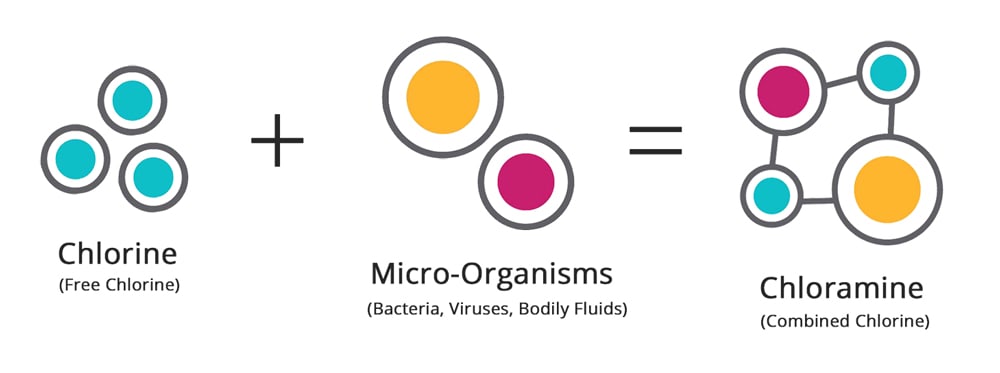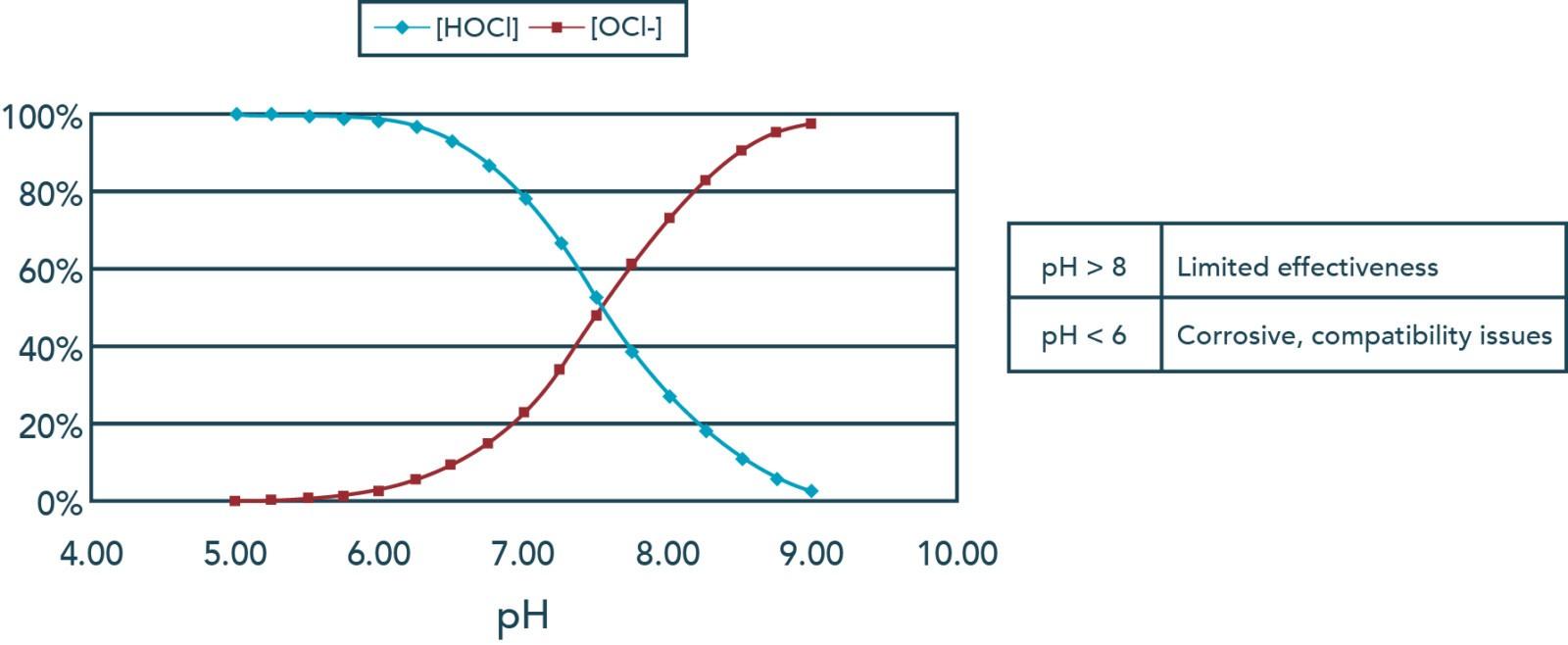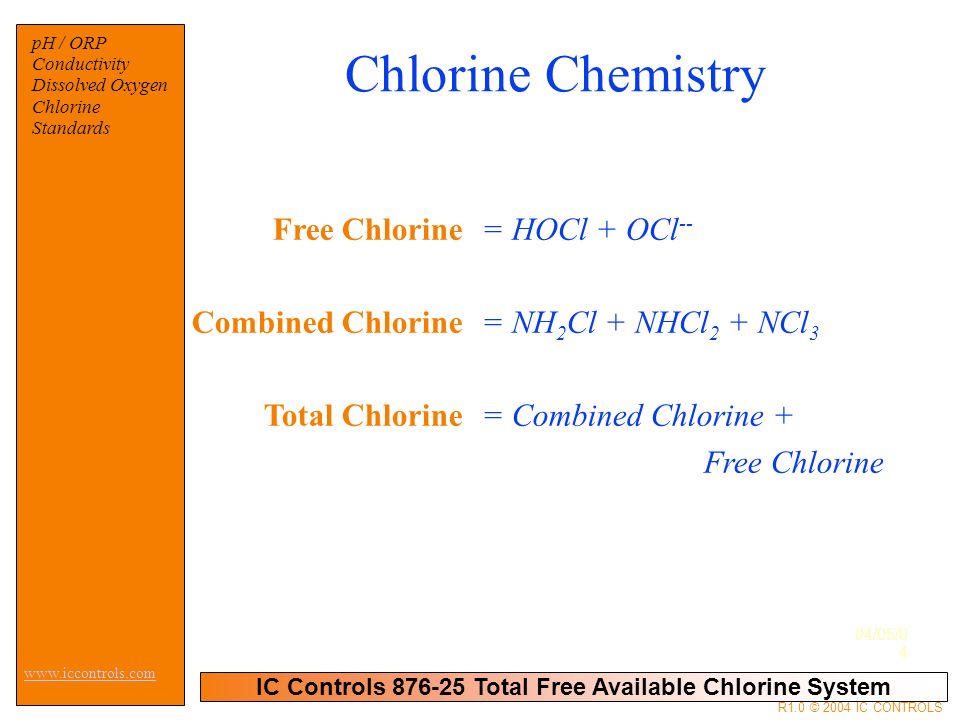free chlorine vs total chlorine vs residual chlorine
Figure 2 shows a hand-held ORP meter. Methods for determining free combined and total chlorine include.

Chlorination Chemistry Considering Chloramines And Free Chlorine Ppt Video Online Download
What ORP Is and When and How to Use It Instead of Free Chlorine continued and influent control.

. Keeping this in view how is free residual chlorine calculated. This is the value you actually test for. By families to store water there should be a minimum of 02 mgL of free chlorine residual present this ensures microbiologically clean water.
02 mgL free 06 mgL total Free Available Chlorine Residuals HOCl H OCl- Chlorine Dosage Chlorine Residual Breakpoint Chlorination Curve Breakpoint dip Peak caused when chlorine combines with ammonia. When ammonia or organic nitrogen is also present chloramines known as monochloramine dichloramine and trichloramine will quickly form. The SWS project methodology leads to chlorine residual levels that are significantly lower than the WHO guideline value for free chlorine residual in drinking water which is 5 mgL value.
Through the residual chlorine test the remaining chlorine amount is determined in water that has finished testing and is ready to be released in the distribution system. Water that is absolutely pure will only have free chlorine as there is nothing to. To complete the test users simply fill.
Free chlorine is also known as chlorine residual free chlorine residual and residual chlorine. Theyre the nasty buggers that make your. When using the DPD colorimetric method for total residual chlorine gel standards will be used for meter verification.
Total chlorine is the total of combined and free chlorine. This is where free chlorine steps up. As this Residual Chlorine left after initial disinfection is consumed by additional disinfection then Total Residual Chlorine can continuously be used to refer specifically to the amount of Chlorine that is remaining after the disinfection that has happened so far.
The first option for chlorine residual testing uses the liquid chemical OTO othotolidine that when added to water with total chlorine in it causes a color change to yellow. Free - Residual chlorine composed of dissolved hypochlorite ions hypochlorous acid and chlorine gas. Total chlorine is basically the sum of free chlorine and combined chlorine.
But its way more effective to use a test that checks for combined and free chlorine because that will give you a clearer picture of how clean your water is. Free chlorine is a component of total residual chlorine the portion of dissolved chlorine gas that is not bonded to any other reactants in water. Free is the chlorine that is ready to fight bacteria and other microbes.
The Chlorine that exists after this initial disinfection is called the Residual. Once the free chlorine does combine it will begin to kill and neutralize the waters contaminants. Chloramines including monochloramines dichloramines and nitrogen trichloride.
Free chlorine is added in order to clean and sanitize your water. Total Chlorine refers to the sum of free and combined available forms. The gel standards must be verified by the.
Total chlorine is the combination of free and combined chlorine. The level of total chlorine should always be greater than or equal to the level of free chlorine. 02 free 05 mgL total IA DNR.
The chlorine residual is the concentrati on of free chlorine. Combined is the chlorine that has mixed with organic matter that has mostly been used up. So the formula to find total chlorine is this.
Total chlorine is the combination of free and combined chlorine that is in your pool. Free chlorine refers to both hypochlorous acid HOCl and the hypochlorite OCl- ion or bleach and is commonly added to water systems for disinfection. Simply put Free Chlorine is the amount of chlorine available to sanitize water in your pool or hot tub.
However when free chlorine has done its job and is depleted youre left with combined chlorine. 03 mgL free 15 mgL total FL DEP. The value of the free chlorine is always a lower than the value of the total chlorine.
A simple handheld instrument that makes ORP measurements can be used to screen for tolerable levels of free chlorine and comply with. Some testing kits will only test for total chlorine because ideally you shouldnt have any combined chlorine. Free chlorine is the chlorinated water that has not interacted with any contaminants in the water.
Free available chlorine refers to the concentration of chlorine molecules residing a water sample that have not yet oxidized contaminants. Amperometric titration colorimetric DPD titrimetric DPD and iodimetric titration. The same holds true of effluent screening.
The key difference between free chlorine and total chlorine is that the free chlorine is the amount of chlorine that can inactivate pathogenic microorganisms present in the water whereas total chlorine is the sum of combined chlorine and free chlorine. Free Chlorine Vs Total Chlorine Hot Tub. Free chlorine vs total chlorine vs residual chlorine.
Total or free residual chlorine measurements be conductedwithin 15 minutes of must sample collection. Total Chlorine Free Combined Minimum system chlorine residuals. Therefore if a water sample has a total chlorine residual but no free available chlorine then the sample may or may not be safe.
Free chlorine is the amount of chlorine present in chlorinated water that is availableor free that isto combine with that chlorinated water. Simply put free chlorine is the amount of chlorine available to sanitize water in your pool or hot tub. The most widely used method colorimetric DPD is easy to perform requires little apparatus is inexpensive and adapts well to field test situations.
The other portion is known as combined chlorine which has bonded with chemicals typically nitrates in the water. The formula of chlorine is free chlorine combined chlorine total chlorine. The Difference Between Total And Free Chlorine.
The sum of free and combined available forms of chlorine. Chlorine existing in water as hypochlorous acid or the hypochlorite ion. What is Chlorine Residual total combined free Total.
As a general rule you want to maintain a free chlorine residual in a body of water or water source. Water that is absolutely pure will only have free chlorine as there is nothing to combine with. Chloramines are also known as combined.
Combined chlorine also called chloramines are smelly and irritating. These two together free chlorine which is the active sanitizer and oxidizer that is doing the job of killing bacteriagerms and removing organics from your pool. Maintaining these levels will assure your pool water is at an ideal quality.
Free chlorine involves the amount of chlorine thats able to sanitize contaminants while combined chlorine refers to chlorine that has combined directly with the contaminants. This is important because while you may know the Total Chlorine you inject into your pool all of that chlorine isnt used. There are three forms of residual chlorine in water treatment.
To properly measure free chlorine in your pool use a FAS-DPD test kit and make sure that the free chlorine is between 10 and 30 parts per million ppm.

Free Chlorine And Dpd Test Yamatho Supply Llc

Chlorine Wastewater Treatment Sensorex

Understanding Breakpoint Chlorination
The Difference Between Total And Free Chlorine

Chlorine In Drinking Water Continuous Monitoring For Detection

Chlorimation And The False Free Chlorine Residual Yamatho Supply Llc

Free Chlorine Vs Combined Total Chlorine Explained

Free Residual Chlorine Measurement Ppt Video Online Download